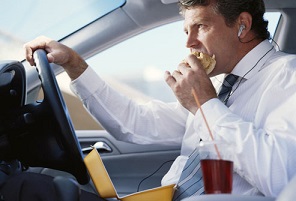The Weather is Cooling Down,
Do You Know How to Heat It Up Safely?
The United Safety Council is aware that most people located in northern states where cold weather is inevitable have a general knowledge of how to use space heaters properly and safely. However, as the Safety Council's main offices are Florida-based, we feel some of our clients may need this reminder. We recommend anyone interested in using a space heater read on. Also, although you may think you know everything about the topic, non-Floridians feel free to keep reading to brush up on your space heater safety knowledge!
What are space heaters?
 This may seem like an odd question but some people honestly don’t know because they've never used one.
This may seem like an odd question but some people honestly don’t know because they've never used one.
When the weather gets cooler, instead of turning up the heat in your home you can purchase a space heater to warm a small space. They can be portable or wall mounted and can be electric or run off of natural gas or propane. The former is recommended as there are many safety hazards associated with the others which will be discussed shortly.
Safety Issues Related to Space Heaters
The two primary health risks from space heaters are the risk of fire and the risk of carbon monoxide poisoning. In 2006, an estimated 19,400 reported home structure fires involving stationary or portable space heaters resulted in 390 deaths, 820 injured persons and $478 million in direct property damage.
If you smell gas at any time, inside or outside of your home:
1. NO FLAMES OR SPARKS! Extinguish all smoking materials & open flames. Don’t operate
lights, appliances, telephones or cell phones. Flames or sparks from these sources can
trigger an explosion or a fire.
2. LEAVE THE AREA IMMEDIATELY! Get everyone out of the building or area where you
suspect gas is leaking.
3. SHUT OFF THE GAS. Turn off the main gas supply valve on your propane tank if it is safe
to do so. To close the valve, turn it to the right (righty tighty!).
4. REPORT THE LEAK. From a neighbor’s home or other building away from the suspected
gas leak, call your propane retailer right away. If you can’t reach them call 911.
5. DON’T RETURN TO THE BUILDING OR AREA until your propane retailer, emergency
responder, or a qualified service technician determines that it is safe to do so.
6. GET YOUR SYSTEM CHECKED. Before you attempt to use your propane appliances, a
qualified service technician must check your entire system to ensure that it's leak-free.
Preventative Measures
- Use the right kind of heater. Some are designed only for indoor use and some are only outdoor use. Make sure you keep them in their designated area.
- When selecting a heater, look for one that has been tested and certified by a nationally recognized testing laboratory.
- Read your space heater manual. It may seem like common sense but it explains how to set up and operate your space heater safely. Follow the manufacturer’s operating instructions and keep it in a convenient place to refer to.
- ALWAYS keep children and pets away from space heaters! Some heaters have very hot surfaces.
- Children should NEVER be permitted to adjust or move the space heater.
- ALWAYS place heaters at least three feet away from objects such as bedding, furniture, and drapes.
- NEVER use heaters to dry clothes or shoes.
- NEVER place heaters where towels or objects could fall onto it and start a fire.
- NEVER leave a heater on when you sleep or leave the area.
- NEVER use or store flammable liquids around a space heater. The flammable vapors can flow from one part of the room to another and be ignited by an open flame or electric spark.
 Drivers who read or send texts while behind the wheel are
more likely to cause crashes – often leading to life changing injuries and
deaths. To put an end to texting and
driving, AT&T launched the It Can Wait campaign, which Florida/United Safety Council is proud to be a part
of.
Drivers who read or send texts while behind the wheel are
more likely to cause crashes – often leading to life changing injuries and
deaths. To put an end to texting and
driving, AT&T launched the It Can Wait campaign, which Florida/United Safety Council is proud to be a part
of. 












